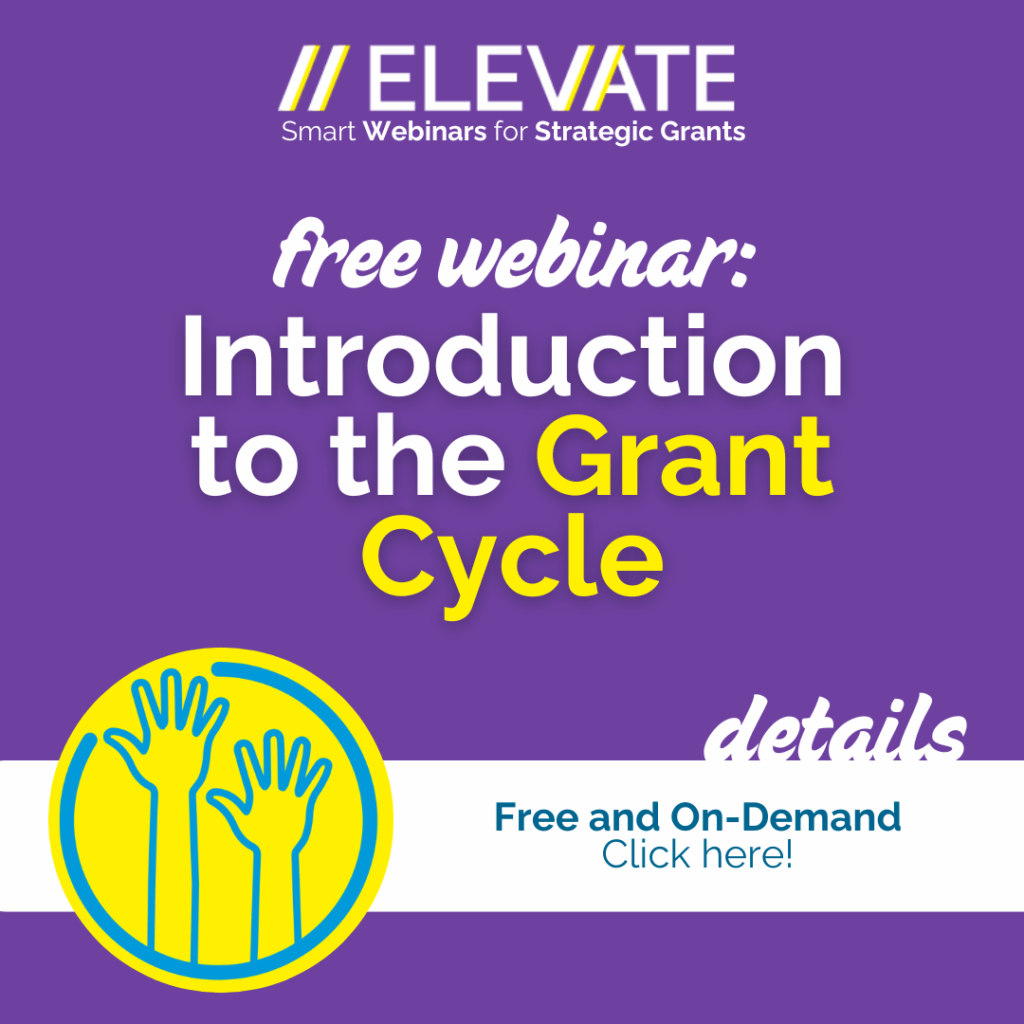These are some common responses from Executive Directors when asked to cultivate a new foundation partner as part of their organization’s larger grant strategy.
Cultivation is often deprioritized in order to “get proposals out the door,” but organizations that ignore the opportunity to build relationships with funding partners before making an ask are doing themselves a huge disservice. If you are looking for some talking points to convince an Executive Director to take action – or perhaps you need some motivation yourself – check out these five tips.
1. Building name recognition with the funder will help you stand out
 When was the last time that you picked up a phone call from “Unknown Caller”? I’m not sure either. When you submit an application to a funder with whom you have never previously spoken, you are essentially that unknown caller in a giant virtual pile of grant applications.
When was the last time that you picked up a phone call from “Unknown Caller”? I’m not sure either. When you submit an application to a funder with whom you have never previously spoken, you are essentially that unknown caller in a giant virtual pile of grant applications.
Need proof? Elevate clients have received responses to cold submissions like this one from the Robert Wood Johnson Foundation:
“We received 342 proposals and can support only 3-4 projects…”
And this one from the Aetna Foundation:
“ We received close to 1,800 applications from locations across the contiguous United States…”
Instead of resigning yourself to being one of hundreds of virtually anonymous applicants in a stack, cultivation activities give you an opportunity to develop name recognition and – maybe – build excitement with the Program Officer about your work.
Bottom line: Cultivation gives you an advantage over the unknown organizations in the pile, and it increases the likelihood that your proposal will receive serious consideration.
2. Getting clarification early could avoid a huge waste of staff time later
Philanthropy is not immune to a culture of buzzwords – innovation, strategy, moving the needle, etc. Your definition of “innovative” or “strategy” could differ greatly from the funder’s. Speaking with a Program Officer before you spend a great deal of time and effort on a complex proposal could save you the trouble of learning later that your program is not quite innovative enough.
Alternatively, it may present you with the opportunity to convince the Program Officer otherwise. You can prevent your proposal from being tossed aside during a high level review if you have clarified definitions and expectations in advance.
Bottom line: Cultivation could save the organization time and money.
3. Insider information is not shared with the outsiders
 Yes, the funder’s website or RFP will outline the official funding priorities, application guidelines, and deadlines. Do you know what it won’t share? You won’t read about the not-yet-official funding priorities that may be incredibly well-aligned with your program and that may even offer a much larger funding amount. The website also won’t recommend that you apply in this current grant cycle because the next one is much more competitive for a smaller pot of money.
Yes, the funder’s website or RFP will outline the official funding priorities, application guidelines, and deadlines. Do you know what it won’t share? You won’t read about the not-yet-official funding priorities that may be incredibly well-aligned with your program and that may even offer a much larger funding amount. The website also won’t recommend that you apply in this current grant cycle because the next one is much more competitive for a smaller pot of money.
A conversation with a human – via email, phone, or Zoom – is much more likely to give you information that has not yet been made public (or may never be) .
Bottom line: Cultivation gives you access to information that others do not have.
4. Even if a funder isn’t interested, they may know someone who is
Funders network too. Program Officers are aware of who else is granting money to organizations in their issue area and geographical community. Groups such as the Philanthropy Network Greater Philadelphia, Philanthropy DMV, and other regional funder networks and issue-based affinity groups regularly bring together foundations with similar goals.
When you speak with a Program Officer on the phone, it is absolutely possible that they make recommendations for where else you might pursue funding. And you don’t have to wait for them to offer – why not ask, “Do you know of any other foundations who may be interested in supporting this project?” Heck, they may even be willing to make an introduction for you!
Bottom line: Cultivation multiplies new relationships (and new funding opportunities).
5. Even rigorous review processes have some measure of subjectivity
 At least as far as we are aware, foundations do not feed their grant proposals into an AI system to review and make funding decisions. Review Committees are made up of humans, and these humans decide which applicants will receive their much coveted dollars.
At least as far as we are aware, foundations do not feed their grant proposals into an AI system to review and make funding decisions. Review Committees are made up of humans, and these humans decide which applicants will receive their much coveted dollars.
Cultivation connects your organization’s people to the Foundation’s people in a way that can not be achieved through words on a screen.
Bottom line: Cultivation is the not-so-secret way to humanize your work for the humans making decisions.
Ready to get started? Check out this blog post with tips on how to keep in touch and build meaningful relationships with your funding partners.
About the Author:

Associate Vice President of Continuous Improvement











 When was the last time that you picked up a phone call from “Unknown Caller”?
When was the last time that you picked up a phone call from “Unknown Caller”? Yes, the funder’s website or RFP will outline the official funding priorities, application guidelines, and deadlines. Do you know what it won’t share? You won’t read about the not-yet-official funding priorities that may be incredibly well-aligned with your program and that may even offer a much larger funding amount. The website also won’t recommend that you apply in this current grant cycle because the next one is much more competitive for a smaller pot of money.
Yes, the funder’s website or RFP will outline the official funding priorities, application guidelines, and deadlines. Do you know what it won’t share? You won’t read about the not-yet-official funding priorities that may be incredibly well-aligned with your program and that may even offer a much larger funding amount. The website also won’t recommend that you apply in this current grant cycle because the next one is much more competitive for a smaller pot of money.  At least as far as we are aware, foundations do not feed their grant proposals into an AI system to review and make funding decisions. Review Committees are made up of humans, and these humans decide which applicants will receive their much coveted dollars.
At least as far as we are aware, foundations do not feed their grant proposals into an AI system to review and make funding decisions. Review Committees are made up of humans, and these humans decide which applicants will receive their much coveted dollars.





